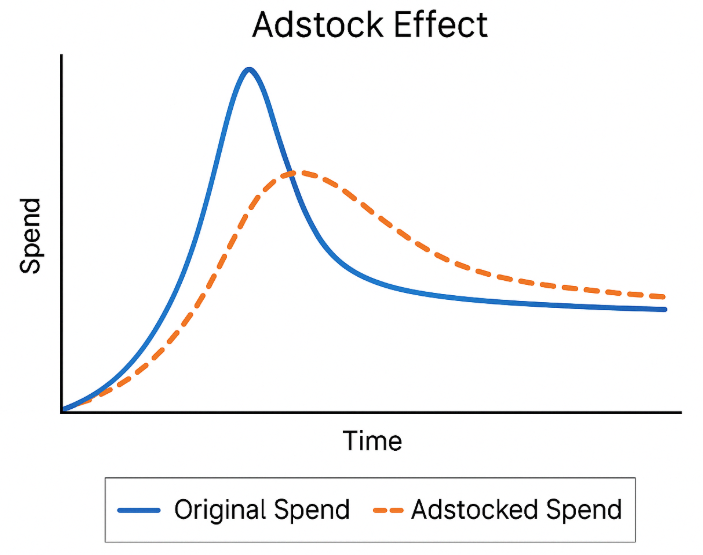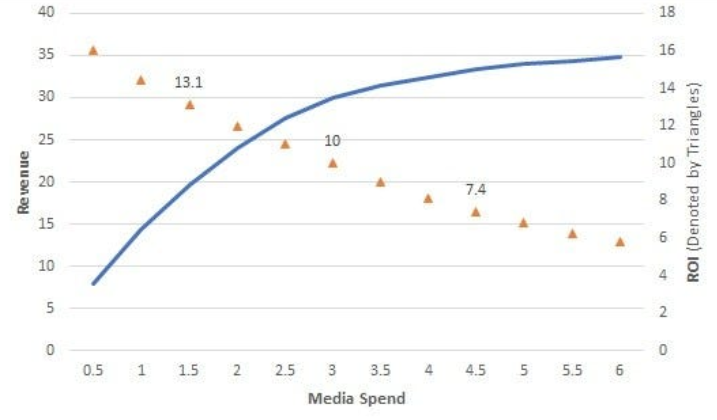Introduction: The Marketing Dilemma
In today’s competitive landscape, marketers are constantly juggling budgets across multiple channels like TV, digital, social media, print, influencer campaigns, and more. But with so many variables at play, how do you measure what’s really working?
That’s where Market Mix Modeling (MMM) steps in. And when combined with the power of Bayesian statistics and Google’s Meridian, MMM becomes a game-changer for marketers looking to gain precise, actionable insights into the performance of their marketing strategies.
This blog walks you through the fundamentals of Market Mix Modeling, how Bayesian MMM transforms traditional methods, what Google Meridian brings to the table, and how AI is making marketing smarter, faster, and more efficient.
What is Market Mix Modeling (MMM)?
Market Mix Modeling is a statistical analysis technique used to estimate the impact of various marketing tactics on sales or any key performance metric (KPI). It helps in understanding how different elements : media spends, pricing, seasonality, and external factors contribute to a business outcome like revenue or conversions.
MMM uses historical data and regression techniques to quantify:
- The return on investment (ROI) of each marketing channel.
- The incremental impact of marketing spend.
- Saturation and diminishing returns.
- Influence of non-marketing factors like holidays, weather, or economic shifts.
It’s particularly useful for businesses with offline sales or limited user-level tracking, as Marketing Mix Modeling doesn’t rely on user-level data like cookies.
Enter Bayesian MMM: A Modern Twist on a Proven Approach
Traditional MMMs often rely on fixed parameters and frequentist assumptions. While they provide a good starting point, they struggle with uncertainty, require manual tuning, and are often rigid when dealing with changing markets.
Bayesian Marketing Mix Modeling addresses these limitations by introducing probability distributions over parameters rather than fixed values. This means:
- It incorporates prior knowledge which is great for marketers with historical insights.
- They’re better suited for automation and real-time adaptation using AI.
With Bayesian MMM, marketers get more robust, transparent, and adaptable models.
Google Meridian: Supercharging MMM with Infrastructure & Intelligence
Google Meridian is a modern, scalable platform that supports Bayesian Market Mix Modeling. It helps marketers:
- Upload datasets easily.
- Define and transform media, organic, and external variables.
- Run automated model training.
- Visualize channel effectiveness and ROI.
- Simulate future performance and optimize spend allocation.
Our application brings Google Meridian’s power into an easy-to-use Streamlit interface, removing the barrier of complex code for marketers and data teams alike.
Here is the demo video of our MMM Solution:
Understanding Adstock and Hill Functions in MMM
One of the critical strengths of MMM lies in how it accounts for real-world marketing behaviors like lagged effects and diminishing returns. Two key mathematical transformations help achieve this: Adstock and Hill functions.
Adstock Function: Capturing Lagged Marketing Impact
Adstock is a transformation used to model the carryover effect of advertising over time.
It applies a decay rate to previous advertising exposures. The idea is that the impact of an ad diminishes over time but doesn’t disappear instantly.
Why it matters:
- Captures reality better than raw spend data.
- Helps quantify long-term effects of branding campaigns.
- Improves model accuracy by aligning temporal influence.

Hill Function: Modeling Saturation and Diminishing Returns
The Hill function models the relationship between marketing spend and response, accounting for saturation and diminishing returns.
Why it matters:
- Reflects how users become less responsive to repetitive ads.
- Helps avoid over-investment in oversaturated channels.
- Enables optimal budget reallocation.
Together, Adstock and Hill make the MMM more reflective of real consumer behavior.

Solving Real-World Problems
Modern marketing operates in a multi-channel, fast-changing environment where clarity is often clouded by data complexity. Traditional models fall short in adapting to these dynamics, and enters Bayesian Marketing Mix Modeling, a smarter, adaptive approach that provides the clarity marketers need.
Here’s how Bayesian MMM is reshaping real-world marketing:
- Precise Channel Attribution
Know exactly which marketing channels are driving performance. Bayesian MMM attributes revenue more accurately by accounting for delayed effects and complex interactions that something traditional models often miss. - Data-Driven Budget Optimization
No more guesswork. Marketers can reallocate budget intelligently using ROI distributions, not just point estimates making decisions that are strategic, not speculative. - Smart Campaign Planning
Plan future campaigns with probabilistic forecasts, incorporating real-world uncertainty and variability helping you avoid overconfidence and costly missteps. - Understanding Delayed & Diminishing Effects
With Adstock and Hill transformations built in, Bayesian MMM models the lagged and diminishing impact of marketing spend, mirroring consumer behavior more realistically. - Adaptability to Change
Whether it’s a shift in consumer trends or the introduction of a new channel, Bayesian models adapt quickly and remain robust in dynamic environments.
Conclusion: From Confusion to Confidence
Marketing doesn’t have to be a guessing game. With Bayesian Marketing Mix Modeling, you don’t just analyze what happened, you understand why it happened and what to do next.
Our application, powered by Google Meridian, gives marketers:
- The transparency to see what drives ROI
- The intelligence to simulate what-if scenarios
- The confidence to optimize future strategies
Whether you’re a CMO, a marketing analyst, or a brand manager this is your tool to turn marketing chaos into clarity. Feel free to drop us a line at connect@dataslush.com to book a personalized demo and we’ll take it from there.




